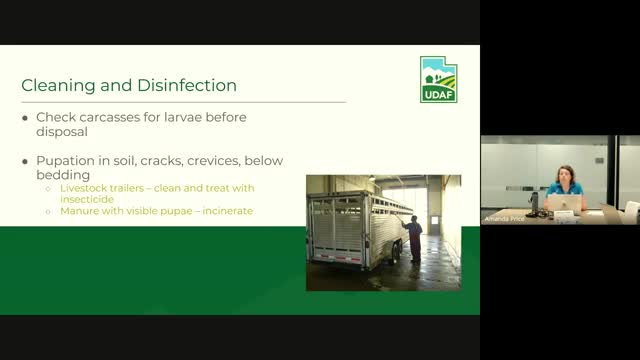Texas to Enhance Fly Control with New Sterile Insect Facility at Moore Air Force Base
July 24, 2025 | Utah Department of Agriculture, Utah Government Divisions, Utah Legislative Branch, Utah
Thanks to Excel Chiropractic and Scribe from Workplace AI , all articles about Utah are free for you to enjoy throughout 2025!

This article was created by AI using a video recording of the meeting. It summarizes the key points discussed, but for full details and context, please refer to the video of the full meeting. Link to Full Meeting
As the discussion unfolded, participants emphasized the urgency of treating animal carcasses to eliminate larvae before they are moved to landfills. "If there are fresh carcasses, we need to make sure that we treat those carcasses to kill off those larvae," one expert noted, underscoring the potential for rapid infestation if proper precautions are not taken. The conversation also touched on the need for thorough cleaning of livestock trailers, which can harbor pupae in hidden crevices, ensuring that the next journey does not inadvertently spread the flies.
A significant portion of the meeting focused on innovative control methods, particularly the use of sterile insect techniques. By exposing pupae to gamma radiation, experts can produce sterile males that, when released into the wild, mate with females without resulting in fertilized eggs. This method aims to gradually reduce the population of the screwworm, a strategy that has shown promise in other regions. Currently, the only facility capable of producing these sterile flies is located in Panama, with plans for a new lab at Moore Air Force Base in Texas that will significantly increase production capacity.
The logistics of releasing these sterile flies were also discussed. The goal is to release approximately 2,300 flies per square mile each week, a seemingly modest number that could add up to millions across vast areas like Texas. Experts acknowledged the challenges of scaling up production and distribution, especially if an infestation were to occur in the U.S.
As the meeting concluded, participants left with a sense of urgency and determination. The fight against the New World Screwworm is not just about managing a pest; it is about protecting livestock, ensuring food safety, and safeguarding the agricultural economy. With ongoing efforts and innovative strategies, there is hope that this invasive threat can be contained before it escalates into a larger crisis.
Converted from UDAF New World Screwworm Webinar - July 21, 2025 meeting on July 24, 2025
Link to Full Meeting
Comments
View full meeting
This article is based on a recent meeting—watch the full video and explore the complete transcript for deeper insights into the discussion.
View full meeting

